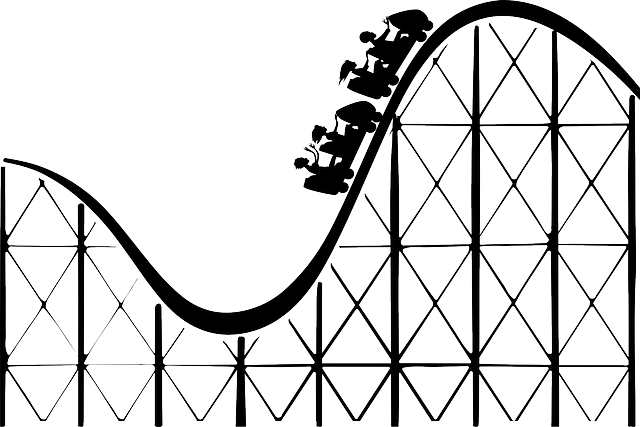Tones: ear-training and quizzes
 This post gives you experience in identifying basic tonal distinctions: high and low, rising and falling and level.
This post gives you experience in identifying basic tonal distinctions: high and low, rising and falling and level.
First we’ll consider syllables which are simply either high or low (i.e. relatively high or low in the speaker’s pitch range). Here is Bruce Hayes of UCLA demonstrating such tones on “nonsense” syllables; the clips are from his own more advanced tone practice page here. To hear the clips, сlick on the written symbols:
![]()
Now some real examples from the Nigerian language Igbo. The clips are from the UCLA Phonetics Lab Archive). The grave ` and acute ´ accents are IPA symbols for low and high tone respectively.

Here is a quiz to test your ability to hear high and low syllables. To take the quiz again (re-randomized), just refresh this page.
Question 1 |
all Low | |
all High | |
Low-High | |
High-Low |
Question 2 |
all Low | |
all High | |
Low-High | |
High-Low |
Question 3 |
all Low | |
all High | |
Low-High | |
High-Low |
Question 4 |
all Low | |
all High | |
Low-High | |
High-Low |
Question 5 |
all Low | |
all High | |
Low-High | |
High-Low |
Question 6 |
all Low | |
all High | |
Low-High | |
High-Low |
Question 7 |
all Low | |
all High | |
Low-High | |
High-Low |
Question 8 |
all Low | |
all High | |
Low-High | |
High-Low |
Question 9 |
all Low | |
all High | |
Low-High | |
High-Low |
Question 10 |
all Low | |
all High | |
Low-High | |
High-Low |
We’ll begin with Daniel Jones producing a long vowel (cardinal 5, ɑ): first with level pitch, then with pitch rising slowly from low to high, and then with pitch falling slowly from high to low. (The level pitch is quite high in his range, but we’re concerned here with the fact that it neither rises nor falls.)
![]()
If you want to check you’re hearing these patterns correctly, take this quiz which uses a range of long cardinal vowels:
Question 1 |
Level | |
Rise | |
Fall |
Question 2 |
Level | |
Rise | |
Fall |
Question 3 |
Level | |
Rise | |
Fall |
Question 4 |
Level | |
Rise | |
Fall |
Question 5 |
Level | |
Rise | |
Fall |
Question 6 |
Level | |
Rise | |
Fall |
(To take the quiz again with re-randomized questions, refresh this page.)
Now here are the three patterns with more normal, speech-like duration. First, Jill House saying cardinal vowel 2, e, then Bruce Hayes saying “da” syllables:
![]()
![]()
The next examples are from Standard (Mandarin) Chinese. The clips come from Ladefoged & Disner’s Vowels and Consonants; note that the established Chinese tone marks are not official IPA symbols.
![]()
The following quiz tests your ability to hear level, rising and falling syllables, using nonsense syllables and Chinese:
Question 1 |
Level | |
Rise | |
Fall |
Question 2 |
Level | |
Rise | |
Fall |
Question 3 |
Level | |
Rise | |
Fall |
Question 4 |
Level | |
Rise | |
Fall |
Question 5 |
Level | |
Rise | |
Fall |
Question 6 |
Level | |
Rise | |
Fall |
Question 7 |
Level | |
Rise | |
Fall |
Question 8 |
Level | |
Rise | |
Fall |
Question 9 |
Level | |
Rise | |
Fall |
Question 10 |
Level | |
Rise | |
Fall |
Question 11 |
Level | |
Rise | |
Fall |
Question 12 |
Level | |
Rise | |
Fall |
(To take the quiz again with re-randomized questions, refresh this page.)
Level tones are often used on hesitation syllables of the type which in English are sometimes written “er”, “uh”, etc. In the standard accents of British and American English, a rising tone often occurs on questions (especially yes/no questions) and on non-final statements; a fall is usual on citation forms and on final statements. Here is Jill House saying a hesitation-type vowel, then ten with a rise, and three with a fall:
![]()
A rise can be thought of as a lower tone followed by a higher tone, with a natural slide between the two targets; likewise a fall can be thought of as a higher tone followed by a lower tone. In Igbo, a low-tone vowel can be followed by a high-tone vowel to create a rising pitch, e.g. kpàá ‘to suggest’. Listen to the similarity in pitch between this word and an English word said with a rise (home said by Peter Ladefoged):
![]()
In a language like English, which is not a tone language like Igbo or Chinese, tones are not specified for every syllable. Rather, they are assigned to whole words or phrases. This means that rises and falls are often spread across more than one syllable. For example, when an English fall occurs over two syllables, the first is said relatively high and the second relatively low. Listen to the similarity in pitch between Igbo ákʷà ‘cloth’, which we heard above, and English follow said by Peter Ladefoged with a fall. In both words, the first syllable is relatively high (with a small rise up to the highest pitch, more marked in the English example), while the second syllable is relatively low:

To end, here is a quiz combining cardinal vowels, nonsense syllables and words from various languages. You have to decide for each utterance whether the tone stays level, rises or falls. (As before, refreshing this page will re-randomize the quiz.)
Question 1 |
Level | |
Rise | |
Fall |
Question 2 |
Level | |
Rise | |
Fall |
Question 3 |
Level | |
Rise | |
Fall |
Question 4 |
Level | |
Rise | |
Fall |
Question 5 |
Level | |
Rise | |
Fall |
Question 6 |
Level | |
Rise | |
Fall |
Question 7 |
Level | |
Rise | |
Fall |
Question 8 |
Level | |
Rise | |
Fall |
Question 9 |
Level | |
Rise | |
Fall |
Question 10 |
Level | |
Rise | |
Fall |
Question 11 |
Level | |
Rise | |
Fall |
Question 12 |
Level | |
Rise | |
Fall |
Question 13 |
Level | |
Rise | |
Fall |
Question 14 |
Level | |
Rise | |
Fall |
Question 15 |
Level | |
Rise | |
Fall |
Question 16 |
Level | |
Rise | |
Fall |
Question 17 |
Level | |
Rise | |
Fall |
Question 18 |
Level | |
Rise | |
Fall |
Question 19 |
Level | |
Rise | |
Fall |
Question 20 |
Level | |
Rise | |
Fall |

